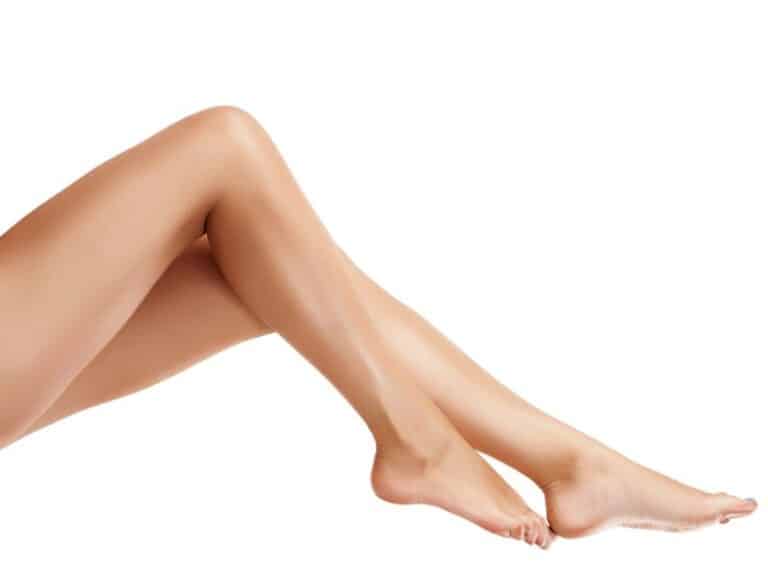Post-Liposuction Clothing Choices: What to Wear and Why
Key Takeaways
- Go for loose-fitting clothing so you can be comfortable and allow for swelling in the days and weeks after your liposuction procedure.
- Choose breathable, moisture-wicking fabrics for maximum airflow, body temperature regulation, and tissue healing support.
- Prioritize comfort and support when picking garments that exert soothing pressure without limiting movement or creating discomfort.
- Working to avoid waistbands that are too tight will both avoid possible complications and lead to better healing after surgery.
- Ask your surgeon for their recommendation for a compression garment. Ensure they offer the appropriate level of support and adjustability to meet your individual needs.
- Keep your pieces clean and ensure they last by always reading care labels carefully.
Who knew managing post-liposuction clothing choices would be the toughest part of recovery! Choosing clothing after liposuction is important. Soft, breathable fabrics make sure you sit pretty through the healing process.
Clothes need to be loose enough to avoid being constricting. The support from compression garments comes from their effect on swelling. They further assist in the elasticity of the body to allow the skin to accommodate.
Make the right choice to maximize comfort and recovery speed. Your body has been through a lot and needs to be treated with love and care as you heal.
Follow these clothing tips to ensure you’re setting yourself up to have as easy and confident of a recovery journey as possible.
What to Wear After Liposuction
1. Choose Loose-Fitting Clothing
After your procedure, the most important thing is to wear something that provides enough space and comfort. Loose-fitting garments give your body room to swell while keeping you comfortable.
Soft materials such as cotton or bamboo are less irritating to sensitive skin after surgery as they limit irritation and healing time. Getting the right size is essential; properly fitting garments will help reduce rubbing and irritation while encouraging healing.
Seamless designs help to avoid chafing even more, and moisture-wicking materials keep your skin dry and comfortable.
2. Opt for Breathable Fabrics
Breathable fabrics are essential in helping to create an environment that promotes air circulation and helps to regulate body temperature. They speed recovery by stimulating better blood flow, which speeds oxygen to healing tissues.
Constant pressure from these garments aids in the reduction of swelling and bruising by promoting the reabsorption of fluids. They also deliver optimal support and stability to keep the body in shape, delivering the best results post liposuction.
3. Prioritize Comfort and Support
Comfort and support are important during this recovery process. Your surgeon will be able to help you decide what level of compression you need to get the best results from your procedure.
Pick garments that are flexible and adjustable as your body shape and swelling change. Features like breathability and 4-way stretch in these garments allow you to stay comfortable even while wearing them for long hours.
It’s better to have a minimum of two garments so you can wear one while the other is washed, keeping your garment clean and extending its life.
4. Avoid Tight Waistbands
Tight waistbands can cause skin breakdown and other complications. Wear compression garments and follow your doctor’s advice on the use of compression garments, which are often advised for four to six weeks after surgery.
Wearing a garment overly tight can lead to skin indentations and circulation problems. Proper fit and consistent cleaning per care instructions are key to maximizing effectiveness and comfort.
Just remember that the fit of the garment in week one may not seem correct by week six. Your body is undergoing changes right up until that six month mark.
Importance of Fabric Choice and Fit
1. Select Soft and Gentle Materials
Choosing the right fabric is especially important after liposuction. Soothing, breathable fabrics such as cotton provide soft comfort while helping to minimize the chance of irritation. Cotton is also a natural, breathable fabric which promotes airflow while keeping the skin dry.
Moisture-wicking fabrics are also an excellent choice. They’re great at moisture management, and post-surgery, staying dry can help keep you healthy and comfortable while you recover. These materials allow the skin to breathe while also wicking moisture away from the area, keeping it clean, fresh and irritation-free.
This is especially helpful since patients must wear compression garments around the clock for a minimum of six weeks post-op. Production elements, such as using a breathable cotton-blend for compression garments can offer the comfort and support a woman deserves during this time.
2. Ensure Proper Sizing and Fit
The fit of post-liposuction clothing, particularly a compression garment, is just as important as the fabric. The right size will allow for the garments to deliver the necessary support without being restrictive or saggy. A quality compression garment must fit tightly enough to reduce swelling, which affects as many as 90% of liposuction patients.
A properly fitted lipo foam recovery garment is crucial for the successful shaping of the body and the healing process. These surgical garments are typically worn around-the-clock during the initial recovery period, with wear time decreasing as healing progresses. Achieving the right fit is essential.
Additionally, a tailored, well-fitted lipo compression garment can help manage swelling effectively. It also plays a significant role in supporting healing tissues, especially following extensive cosmetic surgery procedures like tummy tucks or body lifts.
3. Prevent Irritation and Discomfort
Avoiding irritation and discomfort is a main concern after surgery. Getting the right clothing can make a world of difference on recovery quality. Choosing fabrics like cotton or moisture-wicking materials can make a big difference in keeping sensitive skin safe from friction and irritation.
They provide comfort through subtle movement – stretch and give – so you feel less fatigued when going about your day. Fabric choice and fit are crucial. Compression garments made with these materials prevent swelling.
Plus, they offer just the right amount of support to keep you from chafing. To aid the most comfortable recovery possible, it’s important to be mindful of both comfort and function when making clothing choices.
Benefits of Compression Garments
Enhance Recovery and Healing
Compression garments are essential to post-liposuction recovery. These garments are more than just fashionable body coverings, they play a pivotal role in accelerating the body’s natural healing process. They do this by exerting mild compression to increase blood flow.
This important process aids in the delivery of much-needed nutrients and oxygen to the repairing tissues. This tissue repair helps recovery be more seamless and less painful. Like their use in groin hernia repairs, many patients experience relief from acute postoperative pain with the utilization of these garments.
They’re multifunctional, offering preventive and healing benefits. This is often most clearly seen in their efficacy in treating scars caused by burn injuries, demonstrating their usefulness across various medical settings.
Reduce Swelling and Bruising
Swelling and bruising after liposuction surgery are normal, and wearing a quality compression garment can significantly assist in the management of this issue. These garments deliver constant pressure, preventing excess fluid accumulation and encouraging lymphatic drainage, which is crucial for optimal healing. This impact extends beyond traditional liposuction, also benefiting individuals with limb lymphedema. Many patients report a dramatic difference in their postoperative swelling, with noticeable liposuction results visible three months after surgery.
The therapeutic fit of lipo foam recovery garments minimizes the risk of inadequate fit, potentially affecting as many as 44% of wearers. Their unique design ensures even distribution of pressure, controlling swelling better than any other surgical garment available.
Incorporating quality compression garments into your recovery phase can enhance your overall surgical experience, allowing for a successful recovery while promoting skin retraction. This is essential for achieving the desired appearance after cosmetic procedures such as tummy tucks and body lifts.
Provide Support and Stability
Immediately following surgery, the body requires extra support in order to help stabilize the contoured areas. Compression garments offer this critical, protective support, helping to prevent complications and ensuring a faster recovery back to daily life.
Similar to their use in ankle fracture recovery, they improve range of motion and decrease swelling, contributing to improved function after surgery. When combined with cold therapy, they significantly improve pain relief.
This combination also minimizes the need for drainage, creating a much easier recovery process for patients. In cosmetic surgeries such as abdominoplasties, breast procedures, and facelifts, compression garments are a must.
They add overall stability and comfort during the entire healing process.

Tips for Selecting Compression Garments
1. Consult with Your Surgeon
Before you jump into the world of post-liposuction clothing, you’ll want to get started with a conversation with your surgeon. After all, they know better than anyone what kind of compression garment suits your individual situation.
This is an important discussion because your garment needs to fit tightly, delivering the proper amount of pressure to support your recovery. Your surgeon will be able to advise when these garments should be worn for how long. Typically, this ranges from 2–6 weeks, but can be longer based on your unique healing process.
For those undergoing liposuction in several areas, you might need more than one garment to ensure every part gets the right support.
2. Consider Adjustable Options
When choosing a compression garment, choose one that is adjustable. These can be hooks, hook-and-eye closures, or Velcro straps.
Adjustable garments are great because they can work with you as your body changes size and shape throughout your recovery. With such a high percentage of patients (80%) having visible swelling after surgery, a garment that can adjust is a huge benefit.
Choose a snug fit to promote your recovery and healing journey. When the swelling subsides, you’ll be able to move around in them and make them comfortable.
3. Focus on Breathability and Flexibility
Breathability and flexibility are key to keeping you comfy without compromising on support. Look for high-quality materials, as well as breathable fabrics.
They also serve to prevent the development of skin irritations and enhance user comfort, most importantly when wearing the garment for extended periods of time. Loose, dark clothing is a good idea to wear immediately after surgery as well.
This provides the added benefit of hiding any fluids that may pass through, so you can stay comfortable and your fresh self hidden and confident. Going back to regular clothes is usually within six weeks, but it depends on the individual.
How to Wear Compression Garments Correctly
1. Follow Doctor’s Instructions
Staying on top of your doctor’s aftercare tips will help ensure a successful and speedy recovery from your liposuction. They offer individualized recommendations based on your personal goals.
Wear compression garments full time for a minimum of six weeks. The only times you can take them off are when you’re bathing or taking care of your wounds. This uniform pressure helps control swelling and shapes your body’s natural contours.
Most patients start their recoveries in first-stage garments, typically wearing these for one to two weeks post-op. After that, they move into second-stage garments, which they might wear for two to eight weeks. These stages guarantee that as your body recovers, the compression level is appropriate for your healing needs.
2. Ensure Proper Fit and Adjustment
Getting the correct fit in a compression garment is important. It also should not be excessively tight, as this can result in skin indentations, discomfort, or circulation issues.
You want to make sure you’re getting the right size for providing firm support, but not too tight. If you’re more active or have a more active lifestyle, pick a garment that works with your daily life.
Loose-fitting, comfortable outer clothing can help disguise these garments, providing ease of movement and a feeling of normalcy. Wearing garments that fit properly will help guarantee you’re receiving the full benefits of wearing them.
3. Maintain Cleanliness and Hygiene
Correctly caring for your compression garments is an important part of post-surgery care. If you are provided cleaning instructions be sure to follow them to prevent skin irritation or infection.
It is recommended to have a minimum of two garments to rotate in between washings while providing comfort and cleanliness. Because the tighter your garment is, the more effective it is!
It also prevents build up of sweat and bacteria that might cause infection and prevent you from healing properly.
Conclusion
Making the right post-liposuction clothing choices can greatly improve your recovery experience. Choosing clothing that works for your body and incorporates healing fabrics will not only make you feel more at ease but will also promote healing. In short, compression garments are an investment that pays dividends. They’re meant to control swelling and enhance your overall results. Selecting the correct size and style will help maximize comfort while improving results. Finally, don’t forget to wear them as recommended to achieve optimal results. By doing all of these things, you’ll enjoy a much easier recovery. You’ll look better in your clothing and be happier with your results. Want to simplify your post-surgery experience? You can start this process with the clothing you will need to wear post-liposuction. With a bit of foresight, you can save both time and money. Your post-op body will thank you.
Frequently Asked Questions
What types of clothing should I wear immediately after liposuction?
Comfort is key during your recovery period, so use this opportunity to choose loose, breathable clothing. Opt for soft materials like cotton that help minimize irritation, and avoid restrictive garments that could complicate your lipo recovery time.
Why is fabric choice important after liposuction?
The right fabric, such as breathable cotton and bamboo, reduces friction and supports optimal healing, making them perfect for lipo foam recovery after surgery and ensuring comfort during the recovery period.
What are the benefits of wearing compression garments after liposuction?
Compression garments, such as quality compression garments, play a vital role in post-liposuction care by reducing swelling, supporting healing tissues, and maximizing contouring for optimal healing and improved blood circulation.
How do I select the right compression garment?
Go for a close fit that isn’t too tight, especially when selecting a quality compression garment for optimal healing. Prioritize quality and breathability in your lipo foam recovery attire, ensuring complete coverage over your surgical site for the best support.
Can I remove compression garments while sleeping?
No, you need to wear your lipo compression garment 24/7 during the recovery period for optimal healing. Only remove it for a few hours at a time, such as to shower, following your physician’s instructions.
How long should I wear compression garments after liposuction?
Most of the time, you will wear a compression garment for 4-6 weeks, but listen to your surgeon’s recommendations. Regular use also helps to ensure optimal healing and a quicker recovery period.
How do I correctly wear compression garments?
Make sure the compression garment is tight enough to be effective, promoting optimal healing, but not so tight that circulation is restricted. Eliminate all wrinkles and ensure even pressure is applied over the entire area during your recovery period. Always follow customized instructions from your cosmetic surgeon.





